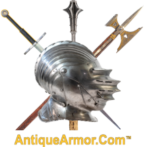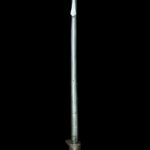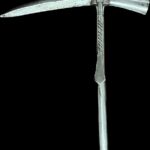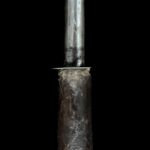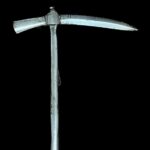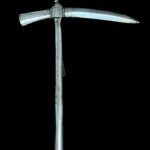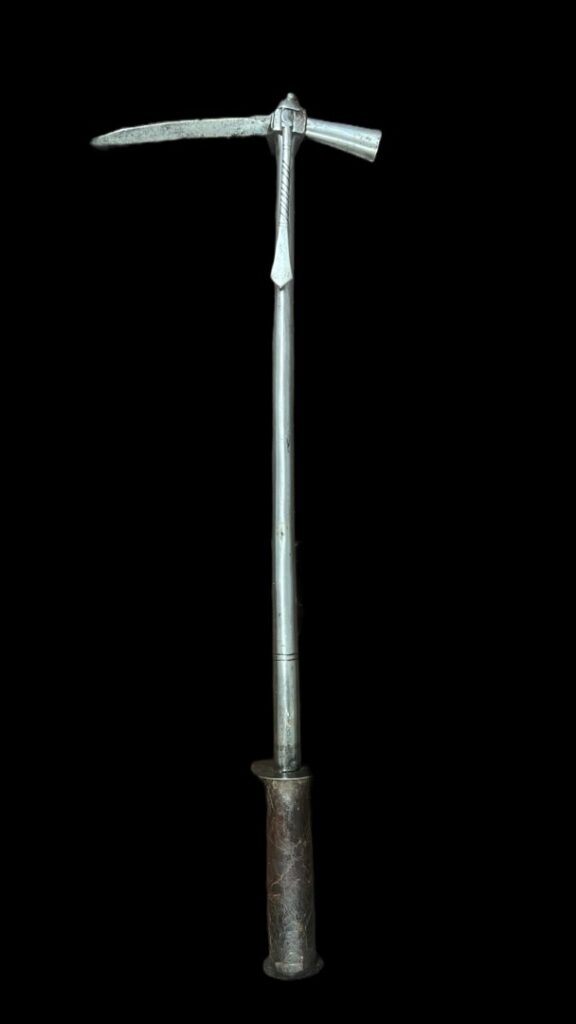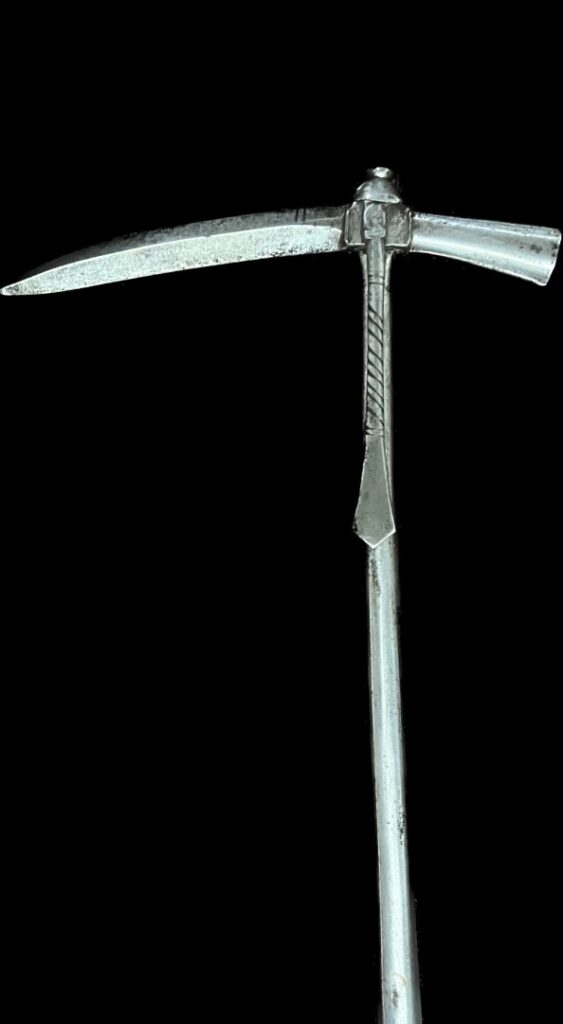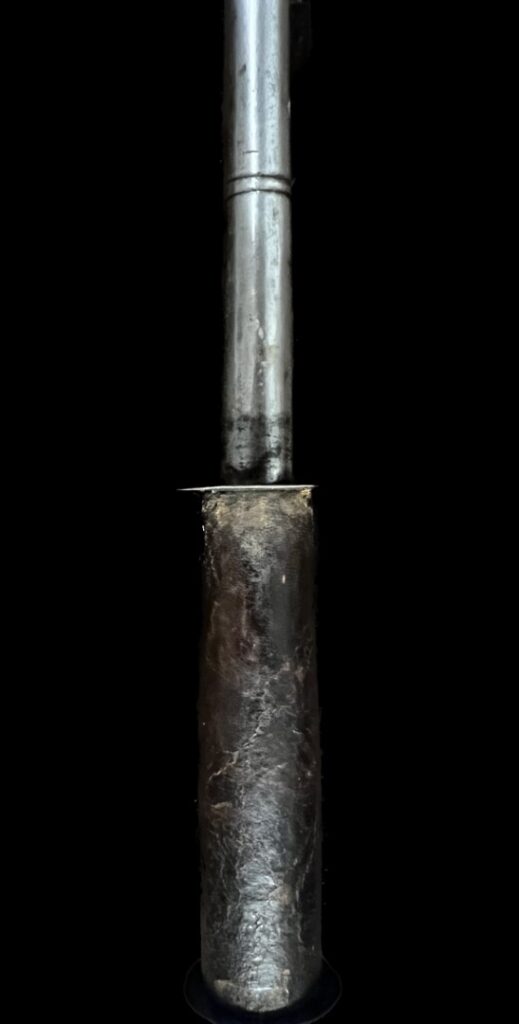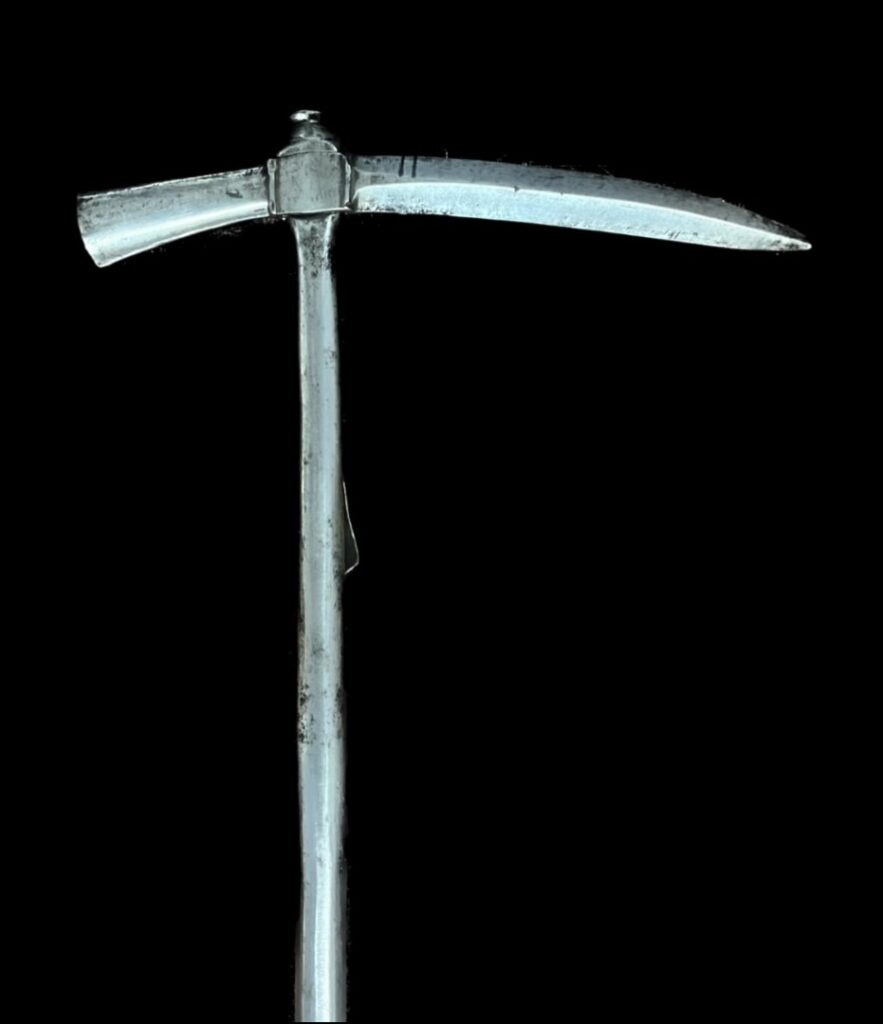1751) GERMAN/AUSTRIAN HORSEMANS WAR HAMMER CIRCA 1580: A beautiful example of a classic war hammer in superb condition.
Introduction: This typology of horseman’s hammer was the most popular from 1550 to 1600 in Western Europe. Like the mace,it’s constructed of all steel. However, it is not as heavy as a mace. A great example of this typology of hammer is in a portrait of Prince Elector Moritz of Saxony with a horseman’s hammer by Lucas Cranach the Younger circa 1580.
The war hammer consisted of a handle (usually wood), more appropriately called a haft, with a heavy metal head. Not all hammer hafts were made with wood. This variant of horseman’s hammer is made of all metal; it was used for smashing armor but with its longer fluke also dismounting a knight from his horse. The length of a hammer’s fluke is a reasonably good indicator to estimate a Western European hammer’s age.
Discussion: The war hammerhead typically included a hammerhead and a curved fluke on the opposite side. Many war hammers were topped with a spike. In addition, the war hammer could be used against mounted cavalry by injuring the horses and/or, as previously mentioned, dismounting the riders with the fluke. War hammers were also used in many types of polearms, including the Lucerne Hammer and Bec de Corbin. Hammers were also used in tournaments. By the 16th century, steel was favored as the standard material for short war hammers.
Description: Constructed with a steelhead formed of one forged piece of steel with a conical hammerhead with a wide circular tip with a flat face, a steel haft traverses through the center of the hammer to a circular point and secured by an internal nut, having the original belt clip decorated with hash marks, a slightly downturned rear fluke of diamond section projecting downwards from its haft also decorated with hash marks, haft widening slightly to a rondel quillon and decorated with two gutters, grip with its original leather grip, a rondel pommel with finial. It has been incorrectly suggested that the butt cap on the hammer may be missing.
Condition: Very good.
Length: Approximately 19 inches.
Discussion: The earliest example of a hammer combatant is the manuscript illustration above (Alençon BM MS 96), showing a judicial combat circa 1151 to 1200 with hammers and shields. The story of the war hammer and its variants is, in many ways, similar to that of the mace. The war hammer is associated with warfare in the late Middle Ages. Like the mace, it developed in response to the growing strength of plate armor in the 14th and 15th centuries. As steel armor became more prevalent, other weapons, such as swords, became less effective in battle. The impact inflicted by a war hammer could cause severe damage even without penetrating the armor.
In my opinion, the best example of the brutality that a war hammer can inflict is from the Battle of Towton. The Battle of Towton was fought near the village of Towton in Yorkshire on Palm Sunday, March 29, 1461, during the English Civil Wars. On this day, plagued by a snowstorm, over 50,000 soldiers died in what is considered the bloodiest, most brutal battle ever in England. Excavations of mass graves show that many men were killed by massive head trauma in which their heads were caved in or split in two. The war hammer was one of the primary weapons of choice for the battle that could have caused this carnage. The war hammer consisted of a handle (usually wood), more appropriately called a “haft,” with a heavy metalhead.
The war hammerhead typically included a standard hammerhead and a curved fluke on the opposite side. Many war hammers were topped with a spike. In addition, the war hammer could be used against mounted cavalry by injuring the horses and/or dismounting the riders with the fluke. War hammers were also used in many typologies of staff weapons, including the Lucerne hammer. Hammers were also used in tournaments. Short hammers were in use from the mid-13th century, primarily by cavalry. By the 16th century, steel was favored as the standard material for short war hammers.
Provenance: A well-known and prestigious German collection started at the turn of the century and will be disclosed to the buyer—documentation from the previous two owners.
Conclusion: A rare typology of war hammer any museum would love to display. These hammers are seldom available in the buyers’ market. If you have ever wanted one, now is the time to act!!!*
